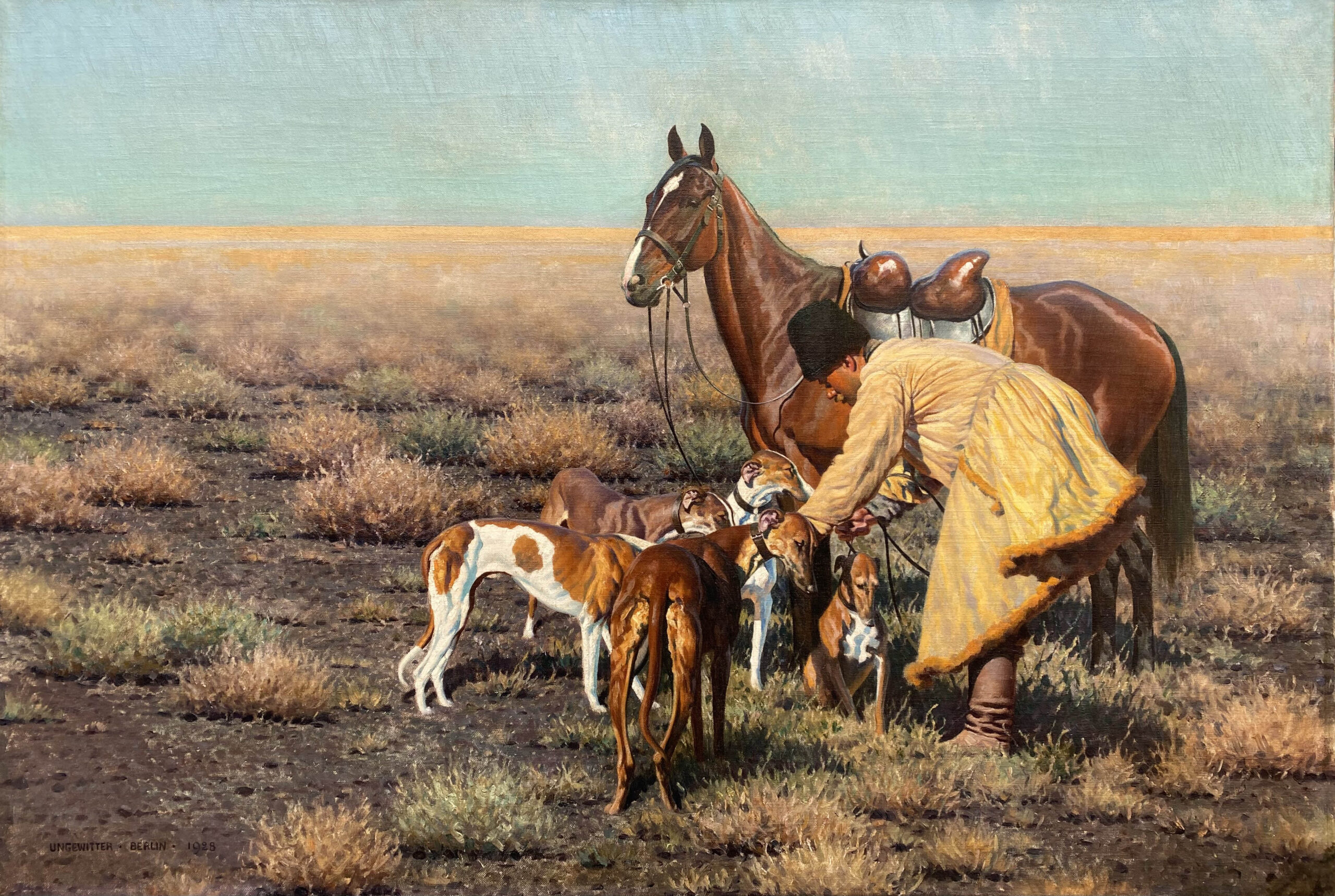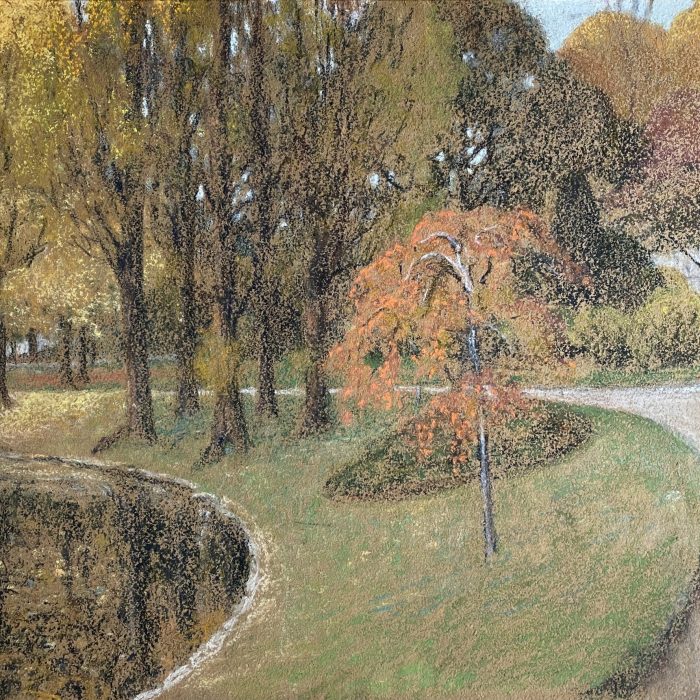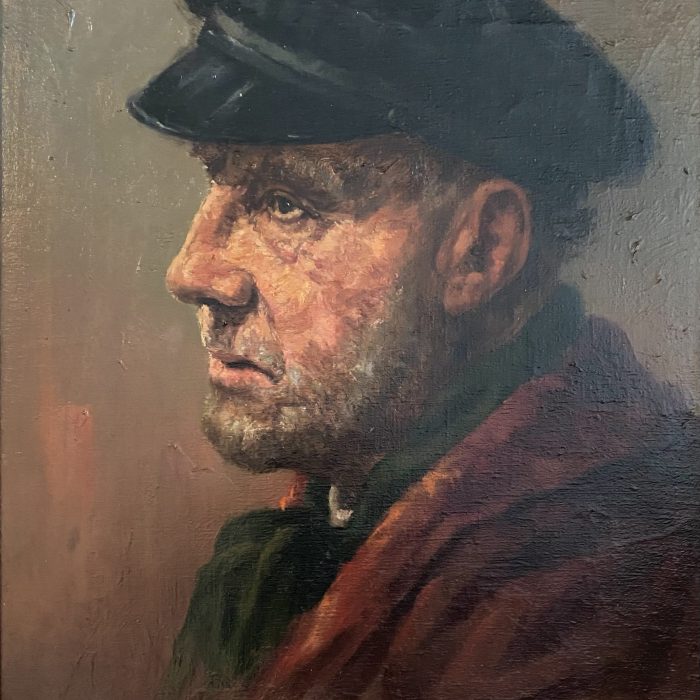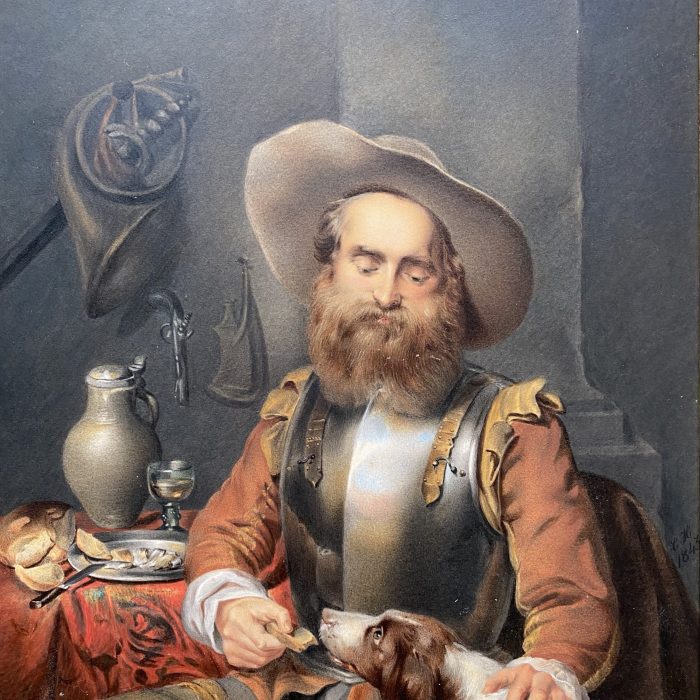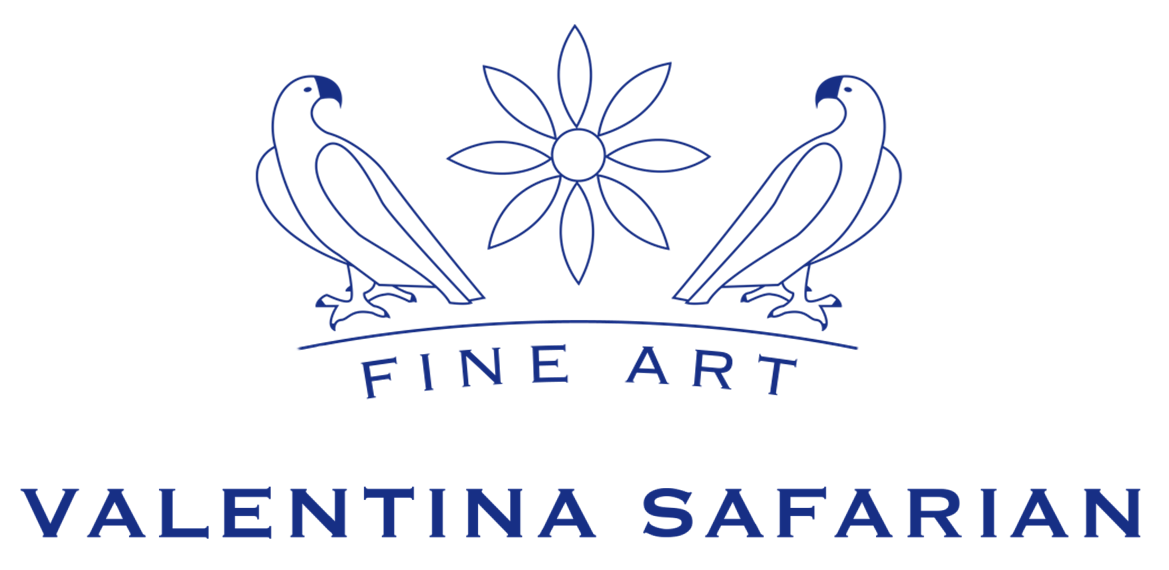Wiedenbrück 1869 – 1947 Osnabrück
German Painter
Hunter with Horse and Hounds
Hugo Ungewitter was a German painter celebrated for his powerful depictions of nature, animals, and historical events. Born on 13 February 1869 in Wiedenbrück, in the province of Westphalia, he moved with his family to Osnabrück in 1876, where he later attended the local Gymnasium.
In 1887, Ungewitter enrolled at the Academy of Fine Arts in Düsseldorf, a prestigious institution that shaped generations of painters. His early commissions already reflected his remarkable ability to capture drama and detail: in 1897, on behalf of the Academy, he created historical paintings for Stotel Castle, and soon after was entrusted by the Royal Court in Berlin to depict the famous Crossing of the Rhine by Blücher at Kaub.
By the early 20th century, Ungewitter divided his time between Berlin and extensive travels. His oeuvre expanded to include vivid battle scenes such as Waterloo, Langensalza, and Simferopol, which gained him recognition as a painter of military history. In 1918, he was invited by the Lübeck Infantry Regiment to Comines-Warneton, where a company was even named in his honor.
Equally admired for his realistic portrayals of wildlife and hunting scenes, Ungewitter found inspiration during journeys to South America, Eastern Russia, and later to Abyssinia in 1924. His impressions from these travels were published in 1926 in the widely read Velhagen & Klasing monthly, accompanied by his sketches and illustrations.
Although his work became less aligned with the artistic trends that emerged after 1920, Ungewitter’s paintings remain admired for their technical mastery, lifelike detail, and sense of narrative. He continued to paint until his later years, passing away on 23 March 1947 in Osnabrück at the age of 78.

